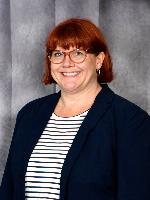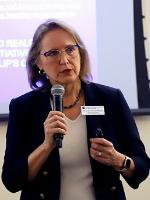
Event Information

The presenter will engage in one-on-one discussions with interested parties. The poster will show the impact of the outreach program which uses cutting edge technology to interest youth in pursuing STEM careers. The impact is measured on both collegiate student instructional assistants and youth participants in all 5 impact categories using mixed mode analysis.
REFERENCES
1. Committee on Underrepresented Groups and the Expansion of the Science and Engineering Workforce Pipeline; Committee on Science, Engineering, and Public Policy and Global Affairs. Expanding Underrepresented Minority Participation: America's Science and Technology Talent at the Crossroads, 135, National Academies Press 2011.
2. Duncan, J. D. and Ramos, Pierre (2019). The Impact of the Science and Math Summer Academy on Student Facilitator Self Efficacy, American Association of Behavioral and Social Scientists Annual Conference, Las Vegas, Nevada.
3. Lent, Brown and Hackett, Toward a Unifying Social Cognitive Theory of Career and Academic Interest, Choice and Performance, Journal of Vocational Behavior, 45, 79-122, 1994
4. Friedman, A. (Ed.). (March 12, 2008). Framework for Evaluating Impacts of Informal Science Education Projects [On-line].
5. Tyler-Wood, T., 2010, “Instruments for Assessing Interest in STEM Content and Careers. Journal of Technology and Teacher Education, 12 (2). 341-363.
6. Dierking, L.D., (1995). Linking After-School Programs and STEM Learning: A View from another Window.
7. Lent, R.W., Brown, S.D., Hackett, G., 1994, Toward a Unifying Social Cognitive Theory of Career and Academic Interest, Choice, and Performance, Journal of Vocational Behavior, 45, 79-122.
8. Zimmerman, B.2000, Self-Efficacy: An Essential Motive to Learn., Contemporary Educational Psychology, 25, 82-91/
9. Jinojosa, T., Rapaport, A., Jaciw, A., LiCalsi, C., & Zacamy, J. (2016). Exploring the foundations of the future STEM workforce: K-12 indicators of postsecondary STEM success (REL 216-122). Washington, DC: U.S. Department of Education, Institute of Education Sciences, National Center for Education Evaluation and Regional Assistance, Regional Educational Laboratory Southwest. Retrieved from http://ies.ed.gov.ncee/edlabs.
10. National Research Council. (2015). Identifying and Supporting Productive Programs in Out-of-School Settings. Committee on Successful Out-of-School STEM Learning Board on Science Education, Divison of Behavioral and Social Science and Education. Washington, DC. The National Academies Press.
11. National Research Council. (2011). Successful K-12 STEM Education. Idenfiying Effective Approaches in Science, Technology, Enginering, and Mathematics. Commitee on Highly Successful Science Programs for K-12 Science Education. Board on Sciences and Education. Washinton, DC. The National Academies Press.
12. Brown, J., 2017, A Metasynthesis of the Complementarity of Culturally Responsive and Inquiry-Based Science Education in K-12 Settings: Implications for Advancing Equitable Science Teaching and Learning, Journla of Research in Science Teaching, Vol. 54, NO 9, 1143-1173.
13. Angelo, TA, 2017, Assessing Motivation to Improve Learning: Practical Applications of Keller’s MVP Model and ARCS-V Design Process, Wiley Online Library, no. 152.


